The obvious destination of the day was the Art Institute of Chicago; here I sat on the steps in the early morning and watched people until the museum opened and I was able to spend the better part of a day (5 hours) just wandering around.
The Institute is massive. You could really spend a lifetime studying the works here. There was at least one piece of art from every well known artist known to mankind; The Europeans: Picasso, Dali, El Greco, Delacroix, Manet, Degas, Monet, Caillebotte, Renior, VanGogh, Matisse; The Americans: Pollock, O’Keefe, Wood, Albright, Hopper, Cornell, Warhol; The Antiquities: Asian Pieces, African Pieces, North American Pieces, and the list goes on.
There were some things that stood out more than others on this trip. These are:
The Ship Figureheads
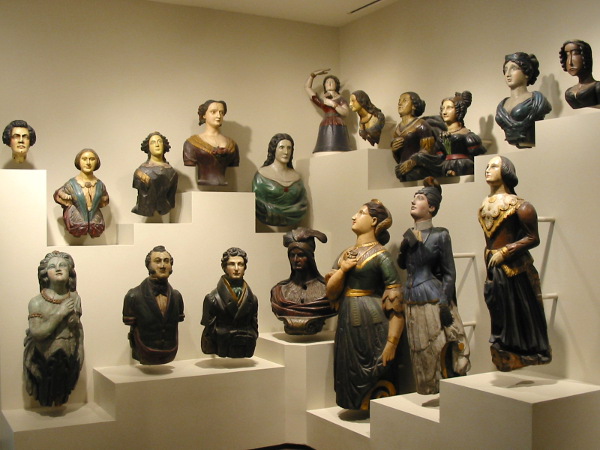
This is the one section of the gallery that affected me the most. The figurehead embodied the spirit of a ship and was originally believed to placate the gods of the sea and ensure a safe voyage. Almost every prow had a carved figure and each one was different and had its own personality and a spirit. The figurehead saw a great deal and was almost a symbol of freedom leading a ship to its next destination or adventure.
It was sad to see their faces and eyes, that had seen so much and been loved so much, now idling in a museum with no real purpose except to be looked at. I am sure that all of these carvings would have rather gone down with their ship than be sitting inactive and mostly overlooked in a museum where Picasso and American Gothic are “stars”. That section of the museum felt haunted and all of these carvings had a spirit of sadness about them.
Joseph Cornell
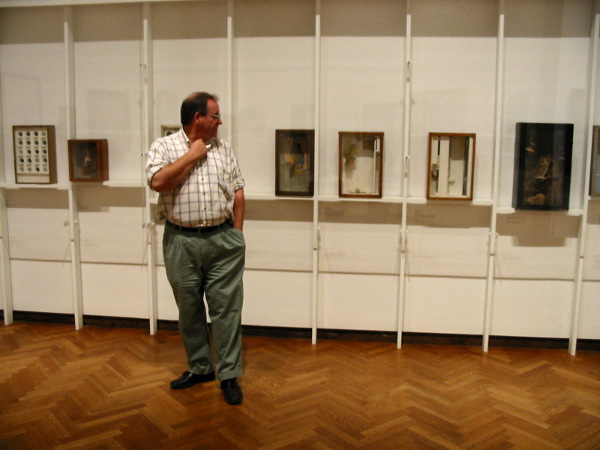
Probably the most interesting character from this trip was Joseph Cornell and his boxes. Joseph Cornell was a recluse who lived in Queens, New York, with his mother and his handicapped brother, Robert. He would spend lots of time wandering around flea markets and New York shops looking for bits and pieces to incorporate into the miniature box worlds he created in the safety of his basement.
He was a self taught artist whose boxes contained everything from drinking glasses to sand to newspaper clippings to images of the earth and the moon to various birds. He obsessed over certain female personalities, the most well known being the ballerina Tamara Toumanova. He tried to give her a painting but she refused thinking he was a obsessed fan (which he was).
His boxes are really interesting in that they are like little voyages that he never took or desires that he had but were never fulfilled — all captured in a small box and sealed behind glass.
Juan Munoz
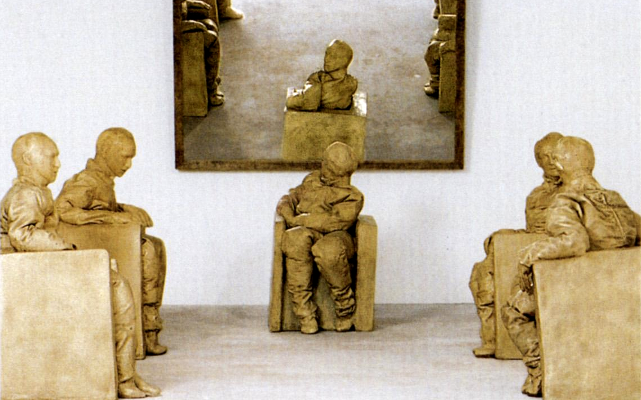
Juan Munoz was born in Madrid in 1953. He spent much of his life travelling through different countries looking for ways to develop his art. Munoz incorporates creepy little men into his work and these men touch you on a level that is interesting (they are both odd and safe little people) but their very expressions can make you feel different things. He is a true master of interactive art in the sense that he somehow manages to pull people into his work allowing them to become a part of the Munoz world.
My first realization of this was with the Five Seated Figures. As I was standing in the center of the seated creepy little men I looked up into the mirror and realized that I was a part of the piece. This can also be seen on another level – by being a part of the piece you also gain insight into what it is to be a spectator of social interactions. Some of the men looked uncomfortable – like they were in a situation where they were unable to talk to others for whatever reason.
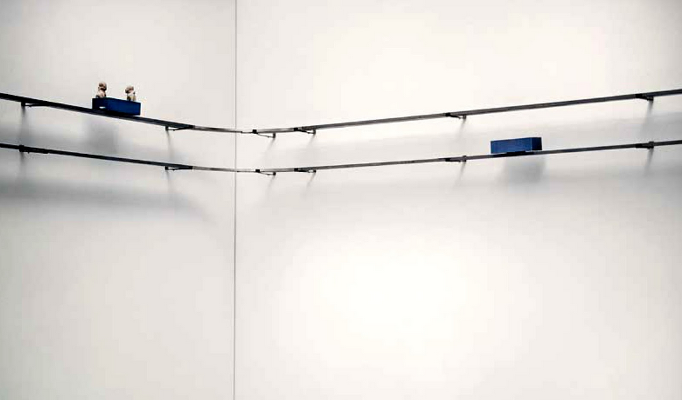
The next piece of interest was Living in a Shoebox. With this there is a little shoe box with two smiley / creepy people inside it that moves slowly back and forth on a train track mounted high on the wall. Munoz (a master of human psychology) has you transfixed as you watch the whole shoebox trip. Once it is over, you are trapped as you wait to see what happens next. You know what the outcome is: the train will of course continue the other way but you still wait and see what is going to happen next. Kind of like the “Poke the Bunny” flash animation that you can find on the web: you know that nothing happens as you poke the bunny, but you still keep doing it just in case.
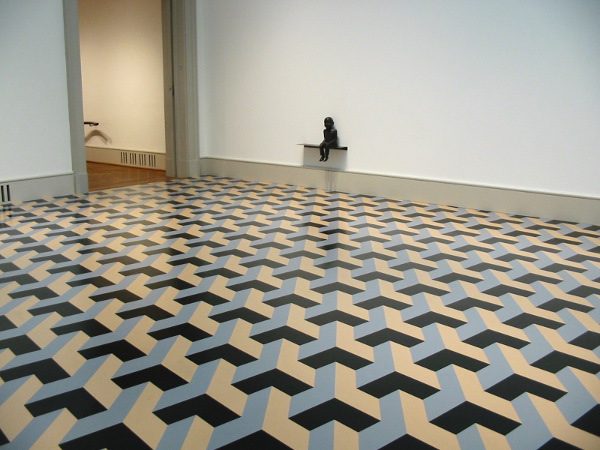
By the time I got to The Wasteland I felt the need to participate further. The Wasteland is a patterned floor that really throws you off your balance. On the other side of the floor is a little creepy puppet sitting on a shelf. It is actually hard to make the first step out onto the floor because it is so unbalancing – but once I was in the middle I did a little tap dance.
Mao by Andy Worhol

Another piece that caught my attention was Mao by Andy Warhol. This is a painting that most people in the world have seen whether they know it or not. And when you first see it you recognize it immediately. What Warhol has done – whether he intended to or not – is create a “brand image” in this painting appropriate for the 20th century. American Pop Art is not something that I really fancy but when I first saw the painting I was in awe of its size (it stands almost 15 feet high) and it completely dominated the room.
The Nudes
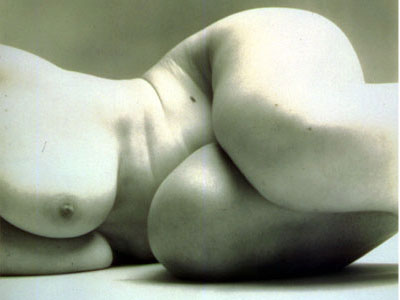
We had lunch in the garden cafe, a small restaurant in the center of a lush courtyard and pond with cherubs that spit out water. Afterward we looked at the photography exhibits of work by Irving Penn and Manuel Bravo. Both had done a series of nudes which focused mainly on very large women. It took Penn half a decade to get his work shown.
Finally, here are some random photos from elsewhere in the museum:
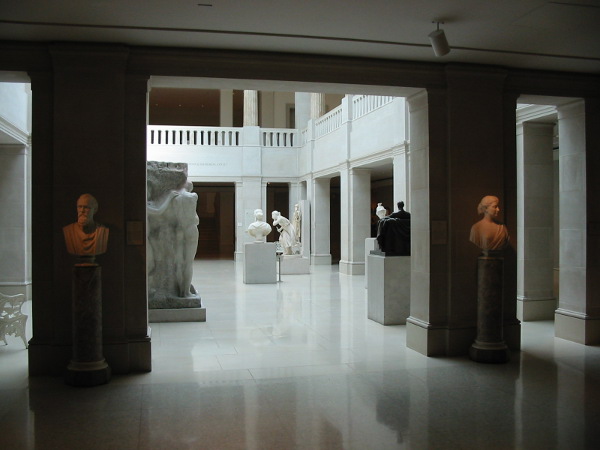
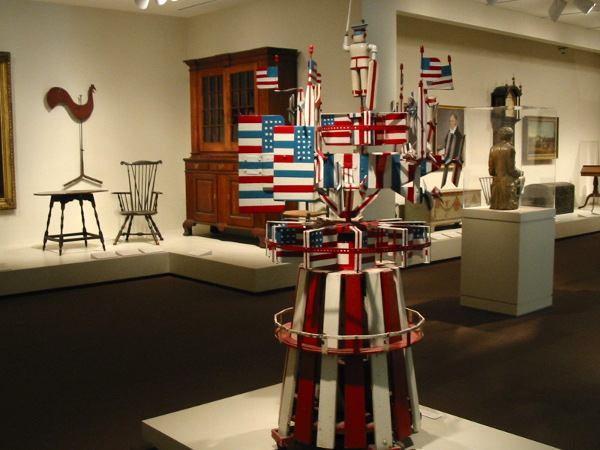
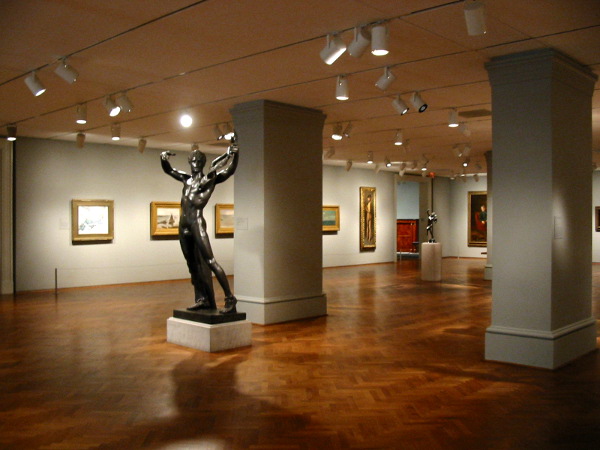
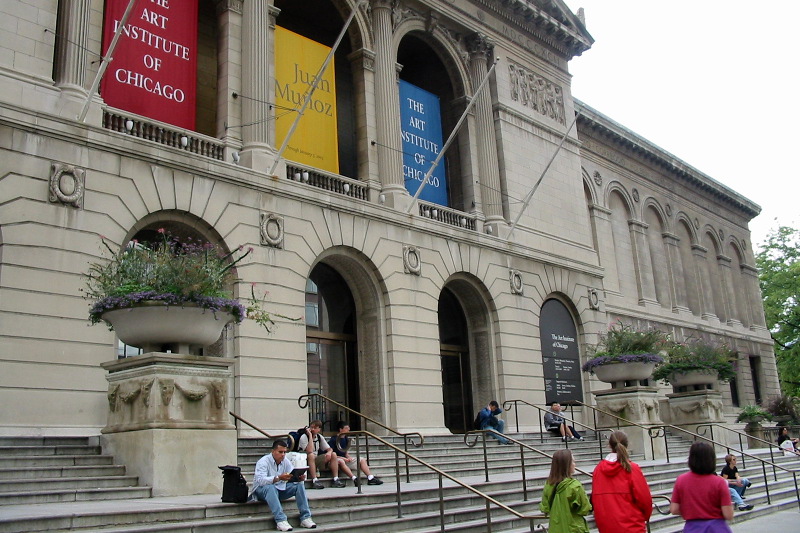
hey weird question but do you know what the exibit was called that the ships figureheads were located in trying to get some info on some of the pieces there.
Not so odd. I’ve been in that situation before. I may still have some of the brochures in one of my scrapbooks. I’ll see if it lists the name of the exhibit when I am home tomorrow.
So, I haven’t been able to find any materials from that particular exhibit. But I will ask a few people that I know who live in Chicago to see if they know or remember.